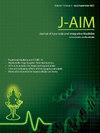世界各国传统和补充医学体系的研究现状
IF 1.9
Q3 INTEGRATIVE & COMPLEMENTARY MEDICINE
引用次数: 0
摘要
尽管生物医学、传统医学和补充医学(T &;CM)系统通过与人的多维连接得以维持。然而,由于研究的不足,它们的科学接受和主流化程度较低。此外,在这方面的现有报告很少着重于它们的个性,而把它们作为一个综合实体。目的了解世界卫生组织(WHO)认可的某一特定药物的研究现状;CM系统在一个定制的框架的间接指标。材料和方法根据与科学文献和研究人员相关的研究传播结果、在COVID-19预防和管理方面的贡献以及专利概况等定量指标对所选系统的研究现状进行评估。结果:中医和针灸等系统比其他大多数系统表现得更好。多学科SCOPUS数据库中的文献数量大于PubMed, PubMed是几乎所有系统的医疗保健数据库。在28名主要作者中,有一半来自发达国家,即美国和德国。被引频次最高的是中医(n = 2238)。在分析的105份期刊中,有40份并非专门针对特定的科技期刊;CM系统。大多数独立的期刊(n = 20)将中医作为主要研究范围。Cochrane系统评价(n = 142)和方案(n = 33)中针灸的评分最高,而许多系统的评分为零。注册的与COVID-19相关的临床研究最多的是中医(n = 335),其次是阿育吠陀(n = 112)。与中医药相关的专利也最多。结论不同地区的研究现状差异较大;CM系统。这些系统的利益相关者需要建立一个与生物医学相当的强有力的证据基础。在这方面,通过世卫组织-全球传统医学中心等组织在全球一级的联合努力可能会有所帮助。本文章由计算机程序翻译,如有差异,请以英文原文为准。
Research status of traditional & complementary medicine systems across the world
Background
Despite strong presence of biomedicine, traditional and complementary medicine (T & CM) systems have sustained with their multidimensional connect with people. However, their scientific acceptance and mainstreaming falls short due to inadequacies in research. Also, available reports in this regard scarcely focus on their individuality and present them as a consolidated entity.
Objectives
The present study was carried out to elucidate individual research status of certain WHO- acknowledged T & CM systems in a customized framework of indirect indicators.
Material and methods
The research status of selected systems was assessed on basis of quantitative indicators viz., research dissemination outcomes concerned with scientific documents and researchers, contribution in COVID-19 prevention and management, and patents profile.
Results
Systems such as Traditional Chinese Medicine and Acupuncture fare better than most others. The number of documents in multidisciplinary SCOPUS database was larger than those in PubMed, a healthcare database for almost all systems. Out of 28 lead authors, half belonged to developed countries, viz., USA and Germany. Highest citation count was recorded for TCM (n = 2238). Of the 105 journals analyzed, 40 were not dedicated to specific T & CM system. Most number of discretely dedicated journals (n = 20) mentioned TCM as primary scope. Cochrane systematic reviews (n = 142) and protocols (n = 33) were highest for Acupuncture, while many systems had zero presence. Maximum COVID-19 related clinical studies were registered for TCM (n = 335), followed by Ayurveda (n = 112). TCM related patents were also highest among all.
Conclusion
There is a huge variation in the research status of different T & CM systems. The stakeholders of these systems need to establish a strong evidence base at par with biomedicine. United efforts at global level through organizations such as WHO-Global Traditional Medicine Centre (GTMC) might be helpful in this regard.
求助全文
通过发布文献求助,成功后即可免费获取论文全文。
去求助
来源期刊

Journal of Ayurveda and Integrative Medicine
INTEGRATIVE & COMPLEMENTARY MEDICINE-
CiteScore
4.70
自引率
12.50%
发文量
136
审稿时长
30 weeks
 求助内容:
求助内容: 应助结果提醒方式:
应助结果提醒方式:


